
Akademia
Team leader : Valérie Pichot
The Akademia site is located on the southern shore of Lake Mariout, some 40 km south-west of Alexandria and 1 km south of the Marea peninsula.
It consists of the Sadat Academy site (to the west) and the Alexandria University site (to the east) and extends down to the north of Ridge III, for approximately 400 m along the canal which runs to the north of Huwariya village.
The CEAlex has been working on the site for two to three months a year since 2012. The site has a very distinctive feature. There is a clear separation between a Late Roman occupation zone (5th-6th centuries AD), exclusively to the west of the site, illustrated by the presence of two large hydraulic structures, each consisting of a sakieh, an aqueduct and a distribution basin, and the eastern part of the site which was occupied at the end of the 1st to 2nd century AD by an agricultural villa, now disappeared, with a wine press and an amphora production workshop. Among the dumping koms are various levels of craft activity (a clay mixing pit, an area for amphora shaping and applying resin), large kilns (four have been identified, two of which are very well preserved) and, further south, levels of domestic activity.
-
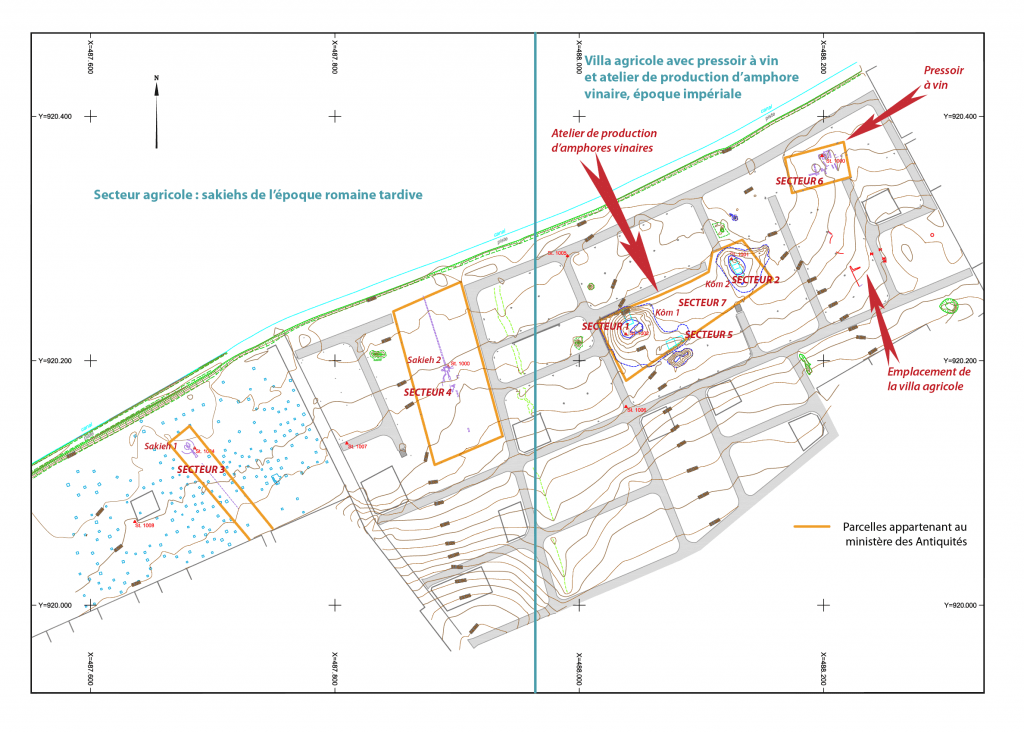
-
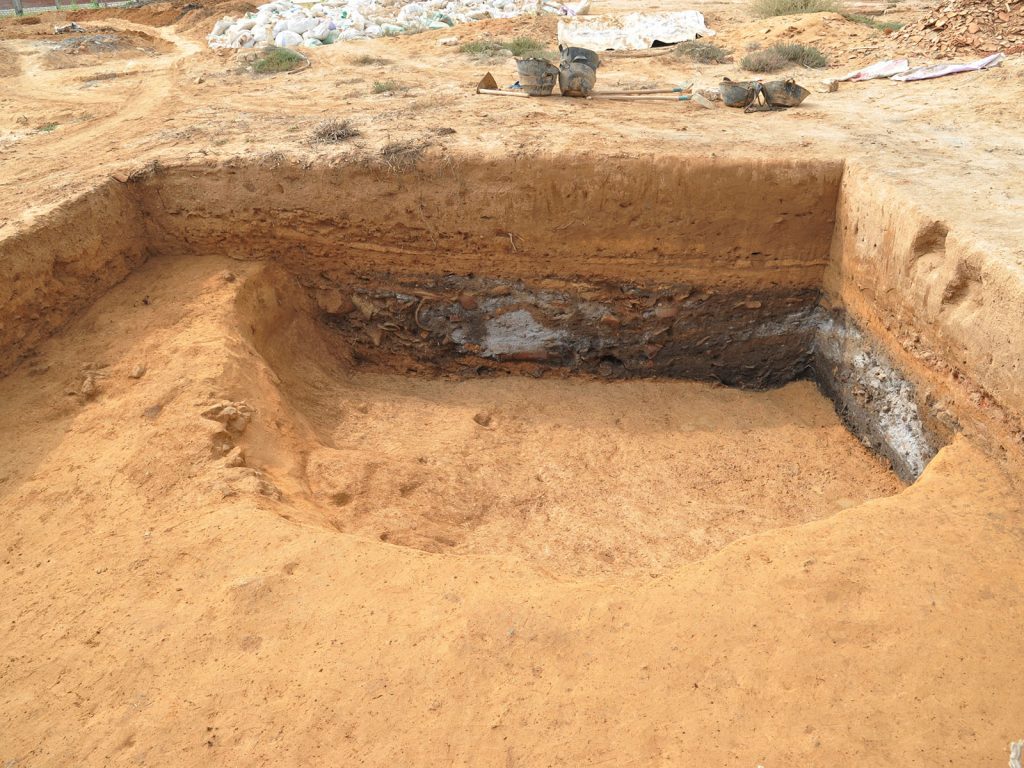
Amphora production workshop: clay extraction pit reused in domestic dump. -

Amphora production workshop: clay mixing pit -
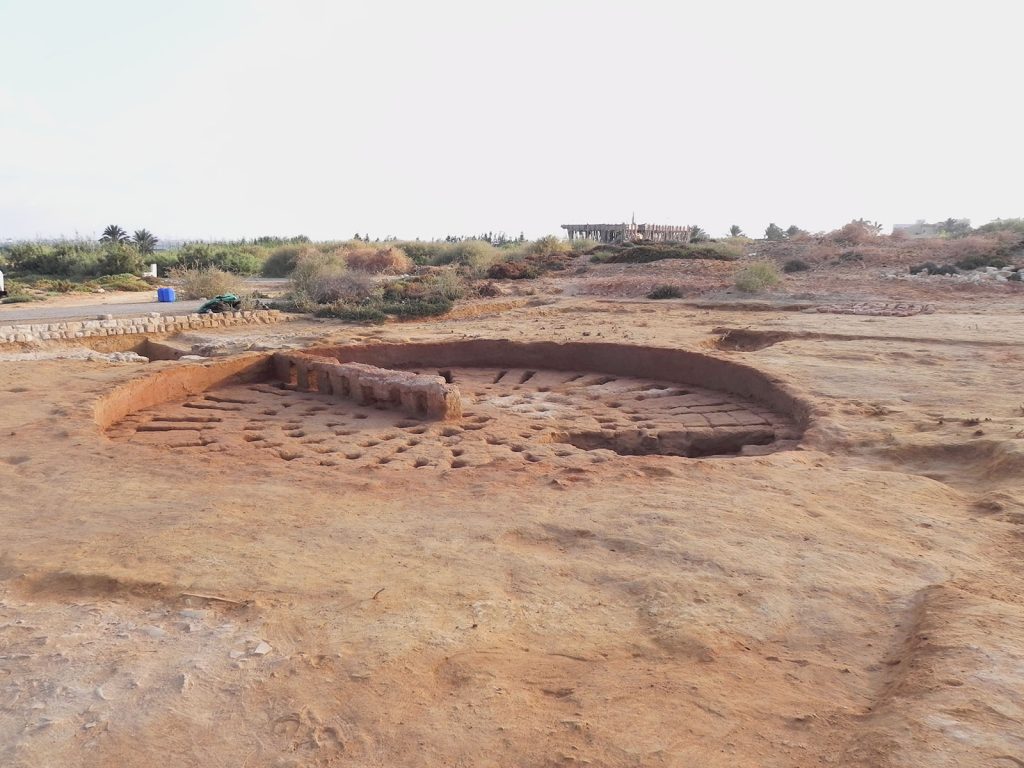
Amphora production workshop: kiln -

Amphora production workshop: space for applying resin to the amphorae. -
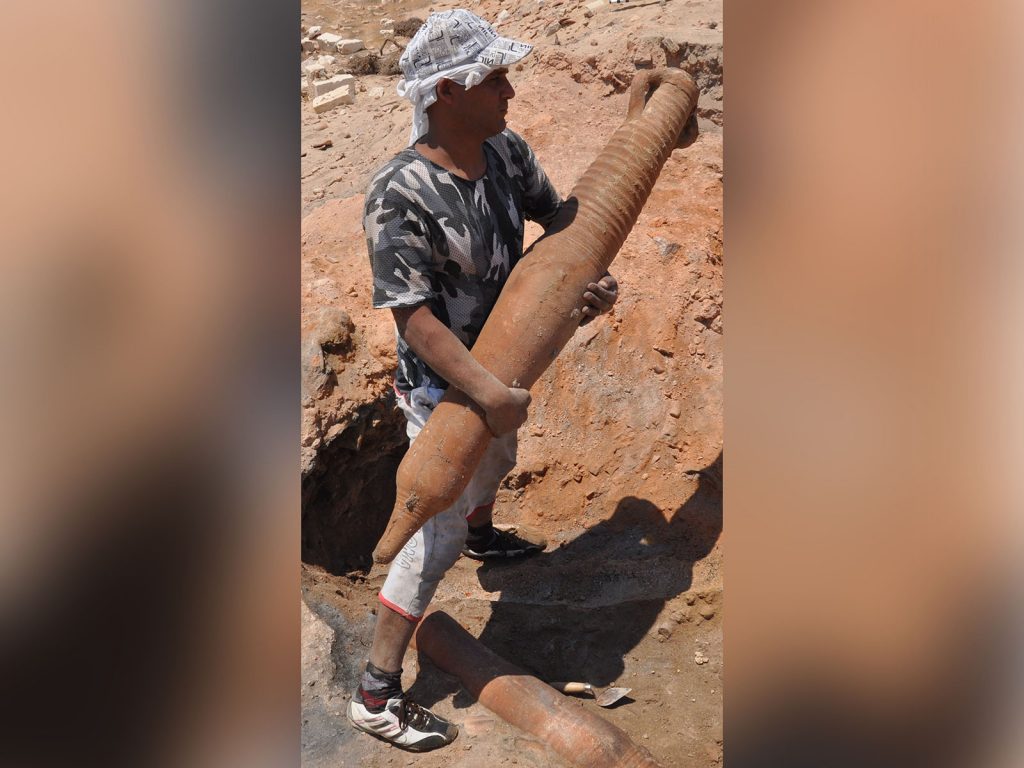
Amphora production workshop: complete AE 3 amphora. -
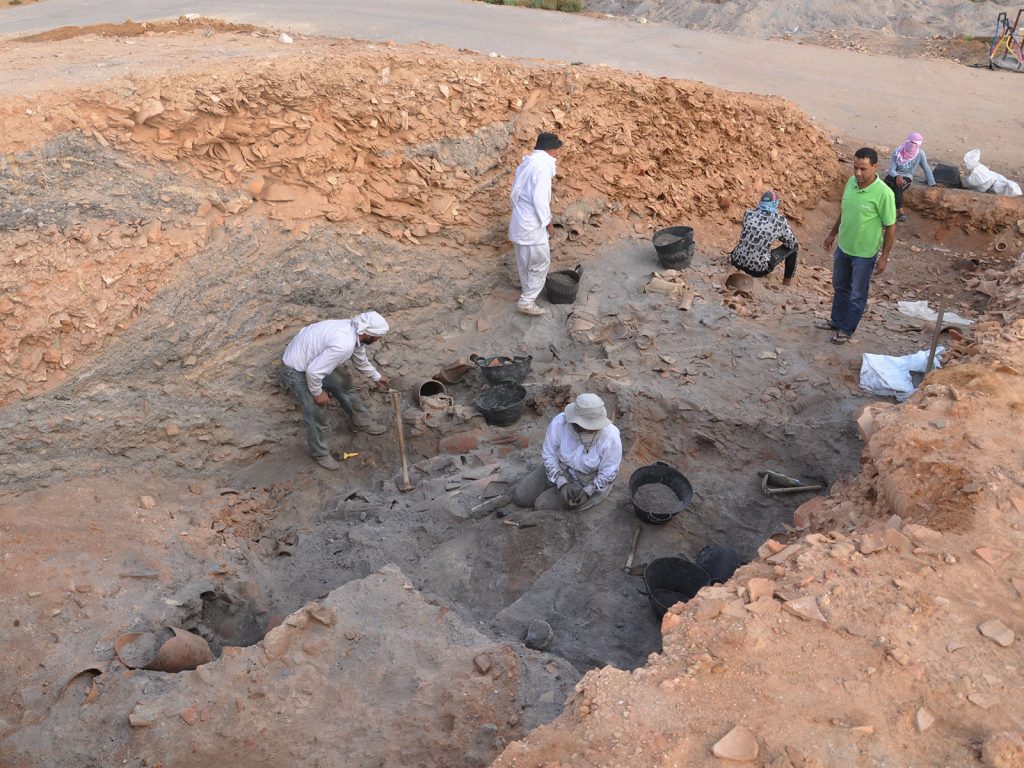
Amphora production workshop: refuse dump under excavation -
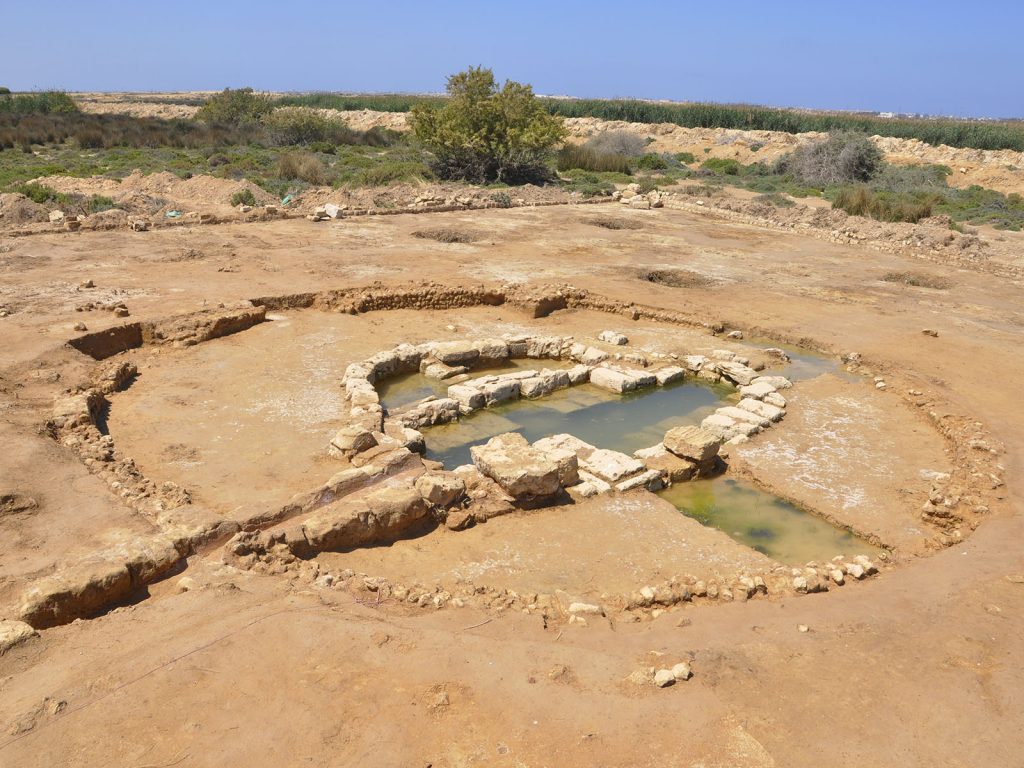
Saqieh. -
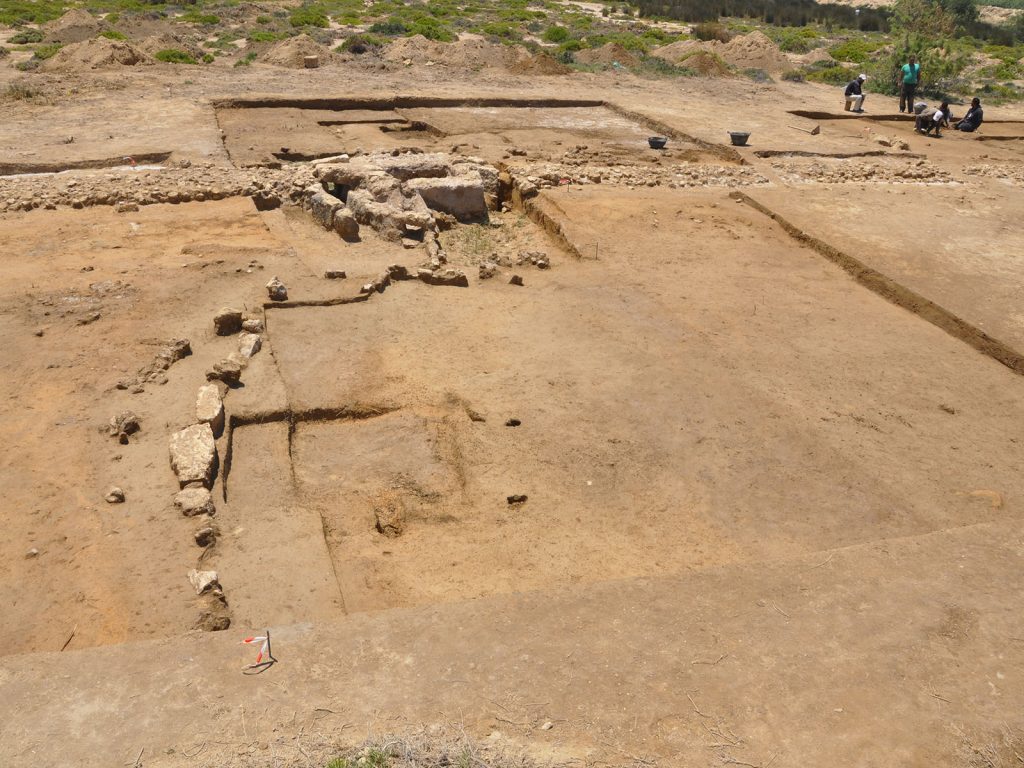
Saqieh: distribution basin and agricultural layers under excavation. -

Saqieh: sondages along the distribution aqueduct revealing traces agricultural activity.
The above reconstruction of an amphora kiln from the Mareotid of the Early Imperial Period was produced as part of the exhibition entitled Discovering the Alexandrian countryside, presented at the French Institute of Egypt in Alexandria in November 2018. It is based on discoveries made at Akademia and other examples uncovered in the region (Borg el-Arab, Philoxenite). Four kilns of this type have been identified on the Akademia site. These are very large circular structures – the largest of which has an external diameter of 14 m and an internal diameter of 8.5 m – with a partially buried floor supported by vaults and a central pillar. It is difficult to estimate precisely the number of amphorae fired at one time in this type of oven. It depends on the size of the amphorae, but also on the number of layers of amphorae stacked on top of each other. It can be estimated, however, that between 400 and 600 amphorae are fired at one go. Other types of pottery (basins, jugs, etc.) that were produced in smaller quantities in the workshop could have completed the batch.
Further reading:
V. Pichot, K. Şenol, « The site of Akadémia: First Excavation Campaign (2012) on the Amphora Workshop of Apollônios », Actes du colloque international de Nicosie, Per Terram, Per Mare 2013, à paraître (déposé en mai 2013).
V. Pichot, K. Şenol, « The Site of Akademia: The Amphora Workshop of Apol(l)ônios. First Excavation Campaign (July-August 2012) », Bulletin de la céramique égyptienne (BCE) 24, 2014, p. 225-240.
V. Pichot, Cl. Flaux, « Les fours à amphores du Haut-Empire du site d’Akadémia (Maréotide) : campagne de fouille et carottages 2014 », Bulletin de la Céramique Egyptienne (BCE) 25, 2015, p. 259-276.
V. Pichot, K. Şenol, « Amphores de Gaza et résine sur le site de production d’amphores du Haut- Empire d’Akadémia (Maréotide) », Bulletin de la Céramique Egyptienne (BCE) 25, 2015, p. 277-289.
V. Pichot, « The Early Imperial era wine amphora workshop of Akademia (Mareotid) », in P. Wilson (ed.), The Egypt Exploration Society Delta Survey Workshop, à paraître (déposé en novembre 2019).
V. Pichot, Aux portes d’Alexandrie. Le développement de la Maréotide hellénistique et romaine, Études Alexandrines, Centre d’Études Alexandrines, Alexandrie, à paraître.
Sur les fouilles de la sakieh occidentale
M.-D. Nenna, « Les actions du Centre d’Études Alexandrines en 2014-1015 », Supplément au BIFAO 115, 2015, p. 277-281.
Poster
V. Pichot, « The Akademia site, an amphora workshop », Egypt Exploration Society Delta Survey Workshop, avril 2017, Bibliotheca Alexandrina.
